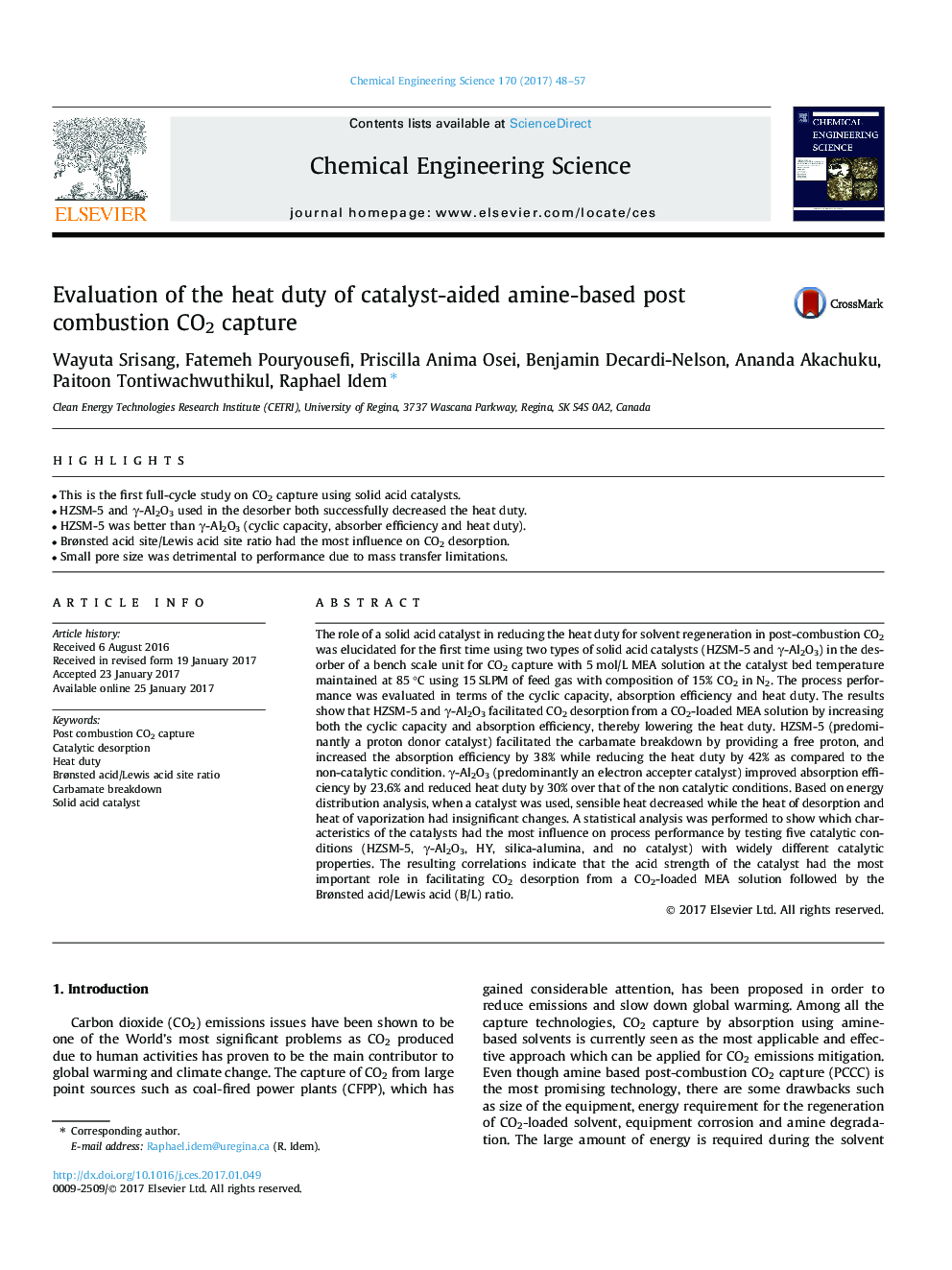| Article ID | Journal | Published Year | Pages | File Type |
|---|---|---|---|---|
| 6467195 | Chemical Engineering Science | 2017 | 10 Pages |
â¢This is the first full-cycle study on CO2 capture using solid acid catalysts.â¢HZSM-5 and γ-Al2O3 used in the desorber both successfully decreased the heat duty.â¢HZSM-5 was better than γ-Al2O3 (cyclic capacity, absorber efficiency and heat duty).â¢Brønsted acid site/Lewis acid site ratio had the most influence on CO2 desorption.â¢Small pore size was detrimental to performance due to mass transfer limitations.
The role of a solid acid catalyst in reducing the heat duty for solvent regeneration in post-combustion CO2 was elucidated for the first time using two types of solid acid catalysts (HZSM-5 and γ-Al2O3) in the desorber of a bench scale unit for CO2 capture with 5 mol/L MEA solution at the catalyst bed temperature maintained at 85 °C using 15 SLPM of feed gas with composition of 15% CO2 in N2. The process performance was evaluated in terms of the cyclic capacity, absorption efficiency and heat duty. The results show that HZSM-5 and γ-Al2O3 facilitated CO2 desorption from a CO2-loaded MEA solution by increasing both the cyclic capacity and absorption efficiency, thereby lowering the heat duty. HZSM-5 (predominantly a proton donor catalyst) facilitated the carbamate breakdown by providing a free proton, and increased the absorption efficiency by 38% while reducing the heat duty by 42% as compared to the non-catalytic condition. γ-Al2O3 (predominantly an electron accepter catalyst) improved absorption efficiency by 23.6% and reduced heat duty by 30% over that of the non catalytic conditions. Based on energy distribution analysis, when a catalyst was used, sensible heat decreased while the heat of desorption and heat of vaporization had insignificant changes. A statistical analysis was performed to show which characteristics of the catalysts had the most influence on process performance by testing five catalytic conditions (HZSM-5, γ-Al2O3, HY, silica-alumina, and no catalyst) with widely different catalytic properties. The resulting correlations indicate that the acid strength of the catalyst had the most important role in facilitating CO2 desorption from a CO2-loaded MEA solution followed by the Brønsted acid/Lewis acid (B/L) ratio.
